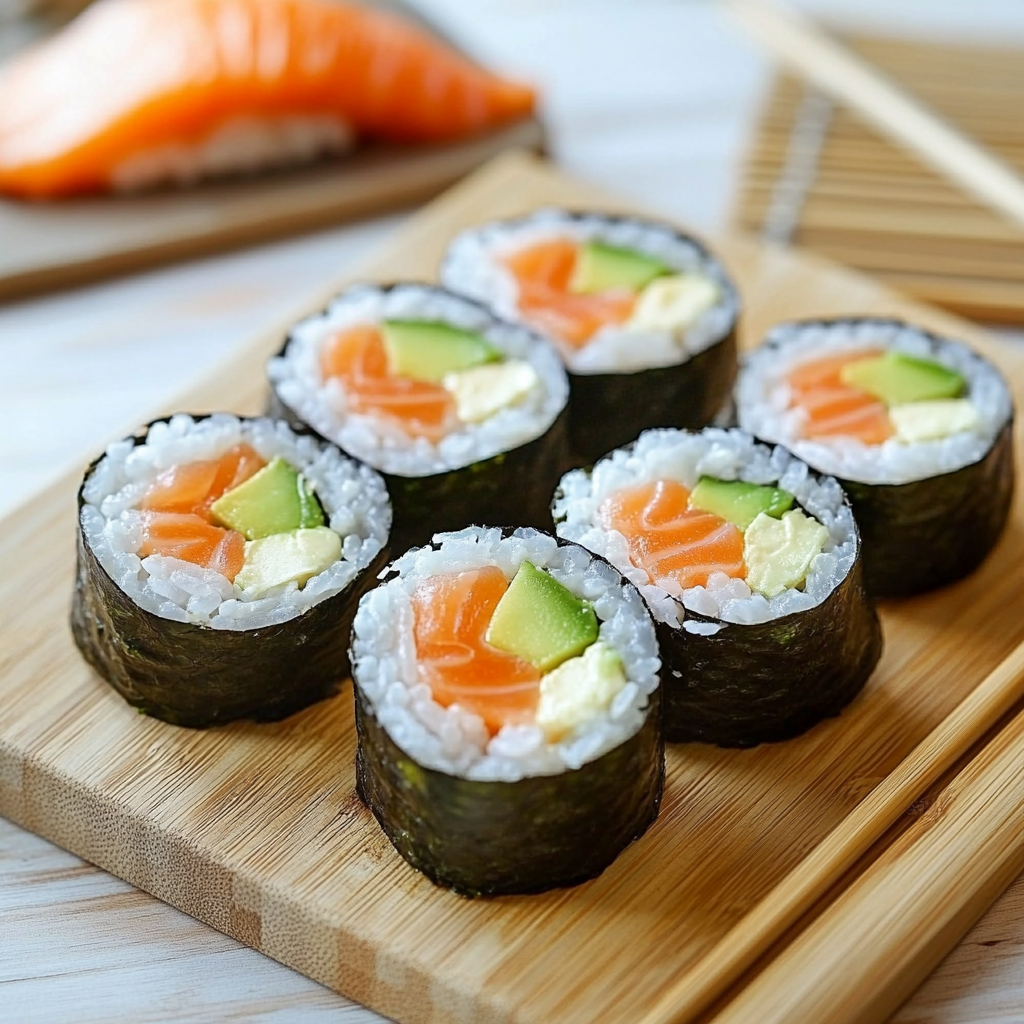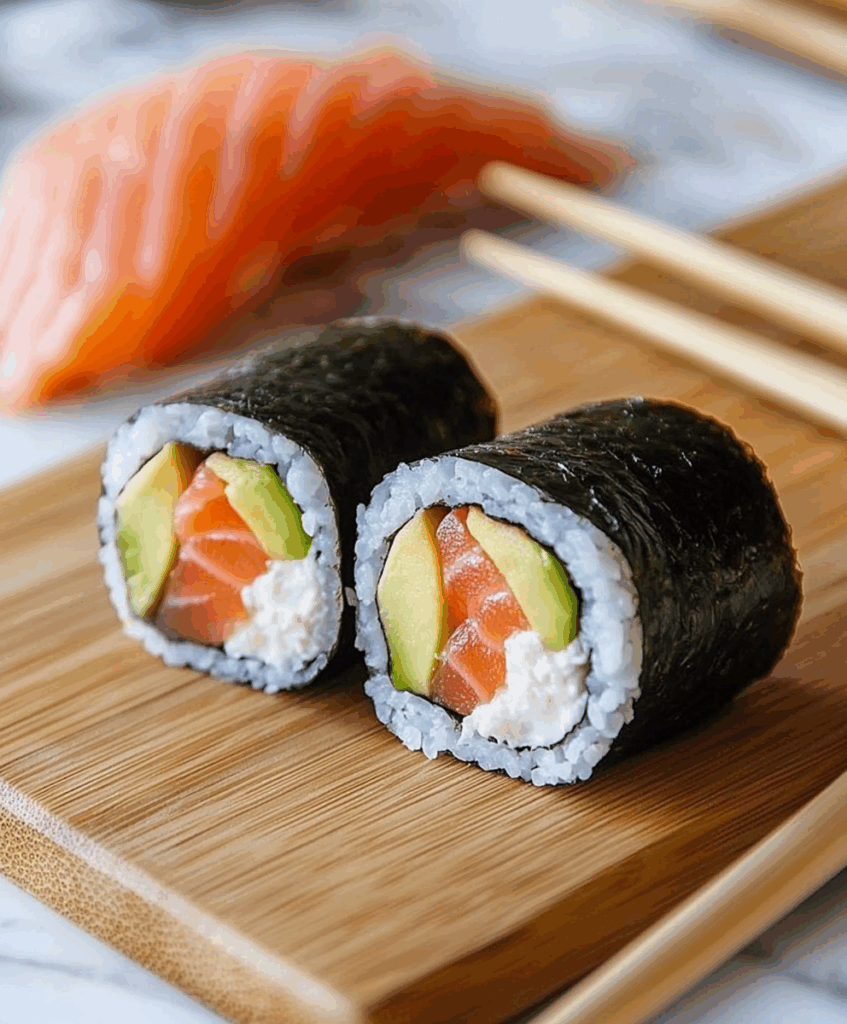Sushi Recipe
Making Homemade Sushi is easier than you might think and costs a fraction of what you’d pay at a restaurant. It’s a fresh, fun, and flavorful DIY meal worth mastering.

With just a few key ingredients and minimal prep time, Homemade Sushi transforms into a quick, crowd-pleasing favorite. Each roll is customizable, letting you get creative every time you roll.
Must-Have Ingredients for Homemade Sushi
- Nori (sushi seaweed) – Provides the essential wrapper for sushi rolls, adding a savory, umami-rich bite and structure to each roll.
- Sushi rice – Short-grain rice seasoned with vinegar, sugar, and salt. It’s sticky, slightly tangy, and holds the roll together perfectly.
- Sashimi-grade raw salmon – High-quality, fresh fish is key for safety and flavor. Rich and buttery, it’s the star of many sushi rolls.
- Cream cheese – Adds smooth, creamy contrast to the fish and balances the texture with a hint of indulgence.
- Avocado – Brings a mellow, buttery flavor that complements both the fish and cream cheese beautifully.
- Soy sauce – For dipping, it adds a salty umami kick that enhances every bite.
Roll Like a Pro: How to Make Homemade Sushi
Start by placing a nori sheet on your bamboo mat, shiny side down. Gently spread an even layer of sushi rice over the seaweed, pressing it lightly to stick.
Lay your fillings—salmon, cream cheese, and avocado—along the rice near the edge closest to you. Begin rolling tightly using the mat for guidance, applying gentle pressure as you go.
Once rolled, use a very sharp knife to slice your sushi into bite-sized pieces. Serve with soy sauce on the side and enjoy immediately for the best flavor and texture.
Sushi Success Secrets & Tasty Variations
The key to great homemade sushi lies in the rice—make sure it’s seasoned and cooled to room temperature before rolling. Wetting your hands while handling the rice can prevent sticking and keep things neat.
Not into raw fish? Substitute with cooked shrimp, crab, or even roasted vegetables for a delicious twist. You can also add cucumber, pickled radish, or spicy mayo for extra layers of texture and flavor.
Let your creativity shine by mixing and matching fillings—sushi is wonderfully versatile and fun to personalize.

Don’t Let It Sit: Best Way to Store Sushi Rolls
Homemade sushi is best eaten fresh. If you’re using raw fish, leftovers aren’t recommended due to food safety. Even with cooked fillings, cold rice turns hard and loses its appeal.
Freezing isn’t ideal either, as the texture of both rice and fish will deteriorate. Plan to make just what you’ll eat, and savor every fresh bite while it’s at its best.

Sushi Recipe
Ingredients
- 4 oz cream cheese cut into thin strips
- 6 sheets nori sushi seaweed
- 1/2 lb sashimi-grade raw salmon or preferred type of raw fish
- 1 avocado sliced
- 1 batch sushi rice fully prepared
- Soy sauce for serving
Instructions
- Lay a sheet of nori on a bamboo sushi mat. Spread an even layer of prepared sushi rice over the seaweed, gently pressing it flat with a rice paddle. Arrange strips of raw salmon, cream cheese, and avocado across the rice. Tightly roll the sushi using the mat to help form a firm roll. With a sharp knife, slice the roll into bite-sized pieces. Serve immediately alongside soy sauce for dipping.






